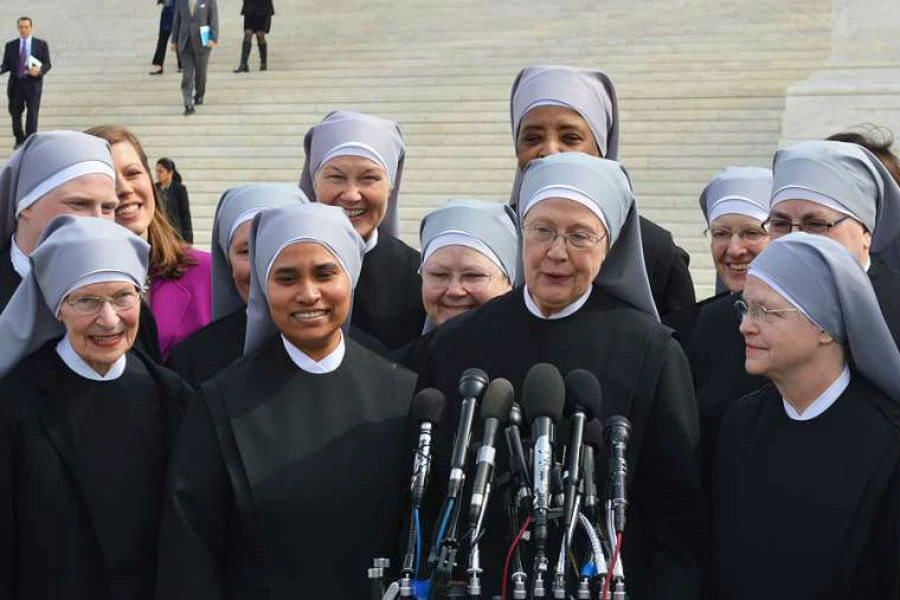
Philadelphia, Pa., Jan 14, 2019 / 04:00 pm (CNA).- Judges in California and Pennsylvania have issued injunctions against a Trump administration rule that would allow the Little Sisters of the Poor and similar groups to claim a religious exemption against the Department of Health and Human Services so-called Contraception Mandate.
Judge Haywood Gilliam of the U.S. District Court for Northern California issued a preliminary injunction Jan. 13 that affects 13 states plus the District of Columbia in the case State of California v. HHS. Gillam declined to issue the nationwide injunction requested by the plaintiffs, the attorneys general of several states led by California.
Responding to the ruling, Mark Rienzi, president of the Becket Fund for Religious Liberty, said Sunday’s decision “will allow politicians to threaten the rights of religious women like the Little Sisters of the Poor,” whom the Becket Fund represents.
On Monday, U.S. District Judge Wendy Beetlestone issued a nationwide injunction blocking the same rule in her decision for the case Commonwealth of Pennsylvania v. Trump.
“We never wanted this fight, and we regret that after a long legal battle it is still not over,” said Mother Loraine Marie Maguire of the Little Sisters of the Poor.
“We pray that we can once again devote our lives to our ministry of serving the elderly poor as we have for over 175 years without being forced to violate our faith.”
In October 2017, the Trump administration issued a new rule that would expand the eligibility of groups to claim religious exemptions to the contraceptive mandate. The new rule was set to go into effect on Monday.
California attorney general Xavier Becerra filed suit against the Trump administration over the new rule shortly after it was announced, and was joined by 12 other states and the District of Columbia.
The Little Sisters of the Poor, and many other religious-based organizations, were not eligible under previous religious exemptions to the mandate since they do not exclusively employ or serve people of their religion.
The Sisters argue that forcing them to offer an insurance plan that provides birth control pills and devices to their employees would violate their religious beliefs.
Rienzi said in a statement Monday that the Little Sisters will return to court to fight the injunctions.
“Now the nuns are forced to keep fighting this unnecessary lawsuit to protect their ability to focus on caring for the poor,” said Rienzi.
“We are confident these decisions will be overturned.”
If you value the news and views Catholic World Report provides, please consider donating to support our efforts. Your contribution will help us continue to make CWR available to all readers worldwide for free, without a subscription. Thank you for your generosity!
Click here for more information on donating to CWR. Click here to sign up for our newsletter.



Leave a Reply